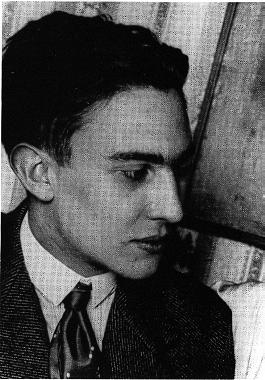Raymond Radiguet facts for kids
Quick facts for kids
Raymond Radiguet
|
|
|---|---|
 |
|
| Born | 18 June 1903 Saint-Maur, France
|
| Died | 12 December 1923 (aged 20) Paris, France
|
| Occupation | Novelist, poet |
| Known for | Le Diable au corps Le bal du Comte d'Orgel |
| Partner(s) | Jean Cocteau (1919–1923) |
Raymond Radiguet (born June 18, 1903 – died December 12, 1923) was a talented French novelist and poet. He was known for his two novels, which had a special writing style and tone.
Contents
Early Life of Raymond Radiguet
Raymond Radiguet was born on June 18, 1903, in Saint-Maur, France. This town is very close to Paris. His father was a caricaturist, someone who draws funny pictures of people.
In 1917, Raymond moved to the big city of Paris. He soon left Lycée Charlemagne, the school he attended. He wanted to focus on his interests in writing for newspapers and creating literature.
Raymond Radiguet's Career
In early 1923, Radiguet published his first and most famous novel. It was called Le Diable au corps, which means The Devil in the Flesh.
His second novel, Le bal du Comte d'Orgel (The Ball of Count Orgel), was published after he passed away in 1924. Besides his two novels, Radiguet also wrote several poetry books and a play.
Friends and Mentors
Raymond Radiguet became friends with many famous artists and writers. These people were part of the Modernist movement, which was a new way of thinking in art.
Some of his friends included Pablo Picasso, Max Jacob, Jean Hugo, and Juan Gris. He was especially close to Jean Cocteau, who became his mentor and helped guide his career.
What People Thought of His Books
Many important critics admired Raymond Radiguet's first novel. In 1945, writers Steadman and Blake said that even the most careful critics loved his work.
Aldous Huxley, a famous writer, said that Radiguet achieved great writing control. He felt that Radiguet reached a level that usually takes a long career to achieve. François Mauriac also praised Le Diable au corps. He said it showed the true feelings of young people.
Raymond Radiguet's Death
Raymond Radiguet sadly passed away on December 12, 1923, in Paris. He was only 20 years old. He died from typhoid fever, a serious illness. He caught the illness after a trip he took with Jean Cocteau.
Jean Cocteau later shared that Radiguet had a strange feeling before he died. Three days before his death, Radiguet told Cocteau, "In three days, I am going to be shot by the soldiers of God." The composer Francis Poulenc was very sad about Radiguet's death. He said he was too stunned to do anything for two days.
In her book Laughing Torso, artist Nina Hamnett described Radiguet's funeral in 1932. The church was full of people. Many famous artists were there, like Pablo Picasso and Constantin Brâncuși. Everyone was shocked by Radiguet's death.
Coco Chanel, the well-known fashion designer, helped arrange the funeral. It was done beautifully. Jean Cocteau was too ill and upset to attend. He was very sad and did not see anyone for weeks.
Film Adaptations of His Work
Raymond Radiguet's novels have been made into movies. In 1947, Claude Autant-Lara directed a film called Le diable au corps. It was based on Radiguet's novel and starred Gérard Philipe. Another movie version, Il diavolo in corpo, was made in 1986 by Marco Bellocchio.
In 1970, Le Bal du compte d'Orgel was also turned into a film. Jean-Claude Brialy played the main character. This was the last movie directed by Marc Allégret.
See also
 In Spanish: Raymond Radiguet para niños
In Spanish: Raymond Radiguet para niños

